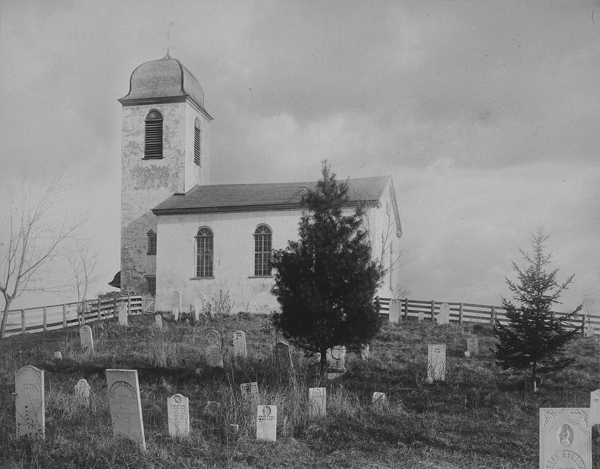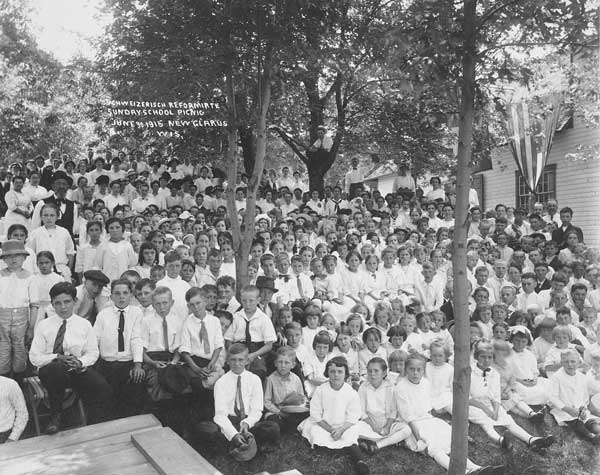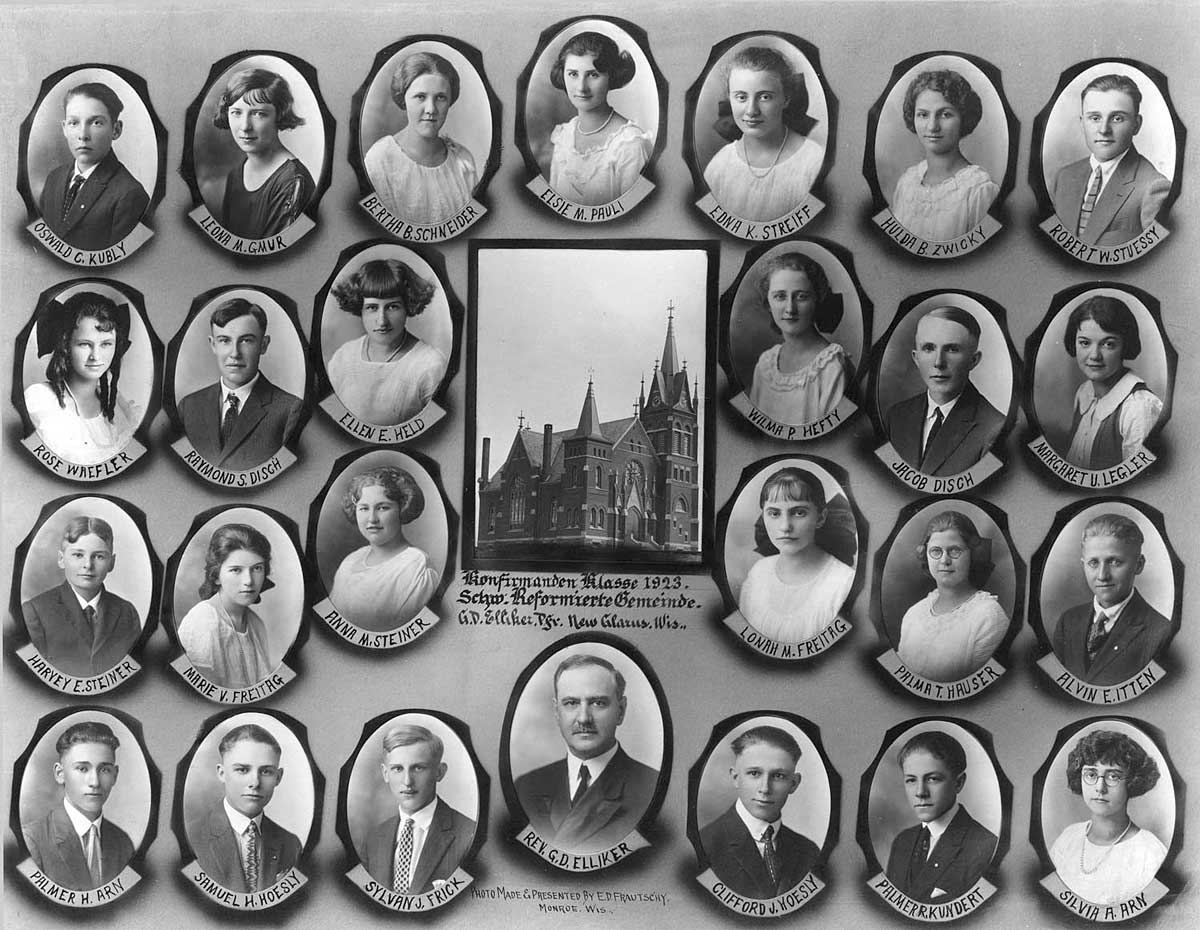It began in 1845 when 27 families of Glarus, Switzerland, moved to Wisconsin to begin a colony here in Green County. They brought with them their faith. Rev. Ulrich Zwingli was one of the leaders of the Protestant Reformation (along with Martin Luther and John Calvin). Zwingli had once been a pastor in Glarus and it was Zwingli’s teachings that formed the basis of New Glarus faith.
When the settlers arrived here, they built shelters on what is now the lawn of Swiss Church. They didn’t have their own pastor, but they held services here, first in homes and, later, in the school they built.
In 1849, the settlers (there were now 60 families) built a log church. The log church up in the Swiss Historical Village, looks like that first church. In 1850, a pastor from Switzerland moved here. His name was Rev. Wilhelm Streissguth. The church was named Swiss Reformed Church. Pastor Streissguth and his brother walked here from Milwaukee.
One interesting thing about Pastor Streissguth is that he always wanted to be a Lutheran and, after he left New Glarus, he was a member of the Wisconsin Evangelical Lutheran Synod. In addition to being our pastor in New Glarus, he was also the town doctor and the town administrator.
The church and the community continued to grow. In 1858, the church replaced its log church with a white stone church, built to resemble small churches in Eastern Switzerland.
The church we worship in today was built in 1900 at the top of the hill. It cost $15,000 to build. It would be hard to buy a new car for that amount today, but, then, it purchased a truly beautiful building. Today’s church uses the same land as the stone church (the log church was down the hill where The Bramble Patch is today. The lawn sloping down from the church was used as the church cemetery. There are still people buried under the lawn today and it is, legally, still an official cemetery.
Originally, all the services at Swiss Church were conducted in German, because that was the language everyone spoke. It wasn’t until 1924 that Swiss Church services were conducted in English – and that was only once a month. Gradually, English replaced German. Things changed from one English service a month to one German service a month. And in 1950, all the services were in English.
The church bells have always been an important part of our church. We purchased the first bell in 1852. It cost $112 and was shipped from Switzerland. The bell did several things. It rang at noon and at sunset, so it helped villagers keep their clocks in time. It also rang when there was a fire so that people could drop what they were doing and come to help.
One feature of the brick church, both then and now, is the large set of clocks in the bell tower. Until 1947, when it was electrified, the clocks ran from huge weights – they weighed 900 pounds and were attached by cables that ran from the church tower to the basement. It took a half-day to wind the clocks and they would run for a week.
Church services were very different in the old days than they are today. For one thing, about 10 minutes before church began, the bells started to ring and the pastor left his house to come to church. The bells didn’t stop ringing until he arrived.
Women sat on one side of the church and men sat on the other. When church was over, the bells started ringing again and all the women left. Men didn’t leave the church until all the women were out.
The “pioneer” statue in front of the church was put up in 1915 – 100 years ago – and is made of granite. It marks the site where the first shelter for the immigrants was built.
 Swiss United Church of Christ 1858
Swiss United Church of Christ 1858
 Sunday School Picnic | June 30, 1915
Sunday School Picnic | June 30, 1915
 Swiss United Church of Christ Confirmation Class 1923
Swiss United Church of Christ Confirmation Class 1923